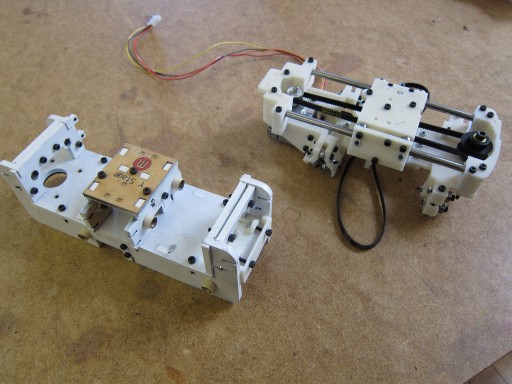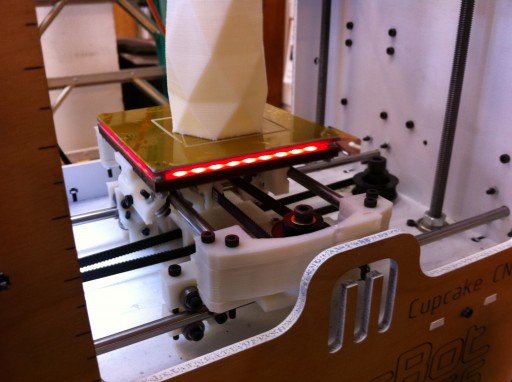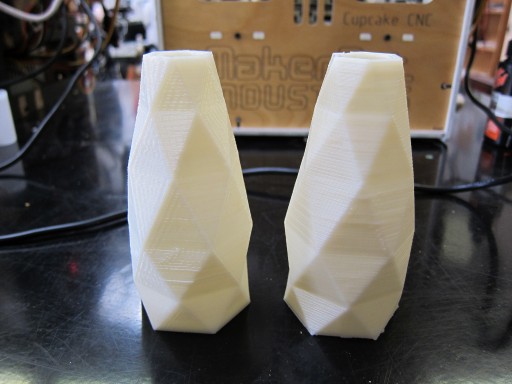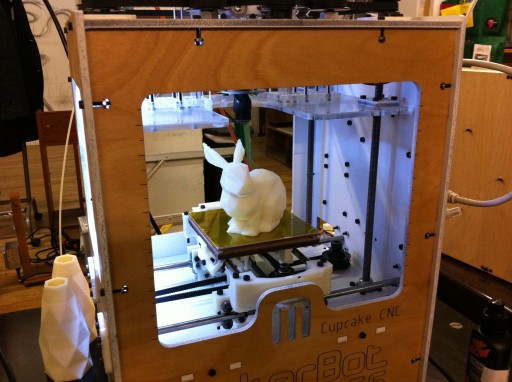One of the most interesting things about the Makerbot 3D printer is that it can be used to repair, or even upgrade, itself. After a substantial run of large prints, the bushings that hold the X & Y platform had started to wear out, and the print stage was becoming wobbly. This translated into unsightly marks and loss of precision on printed parts.
Fortunately, someone on Thingiverse (a repository for uploaded fabrication files) had already developed a replacement XY stage for the Makerbot, based on the RepRap Mendel, that uses bearings instead of bushings. I ordered the parts (nuts, bolts, bearings) and printed the 18 pieces that make up the replacement stage. The design for the new XY stage has gone through various iterations, with lots of useful changes proposed by the user community. Not only that, but there are even upgrades for the upgrade, as I will discuss later.
The new XY stage, mostly printed on the Makerbot, uses bearings instead of bushings, and should experience a lot less friction while moving. The design is also much lower, and allows for more than 1cm increase in vertical travel.
As I was in the process of putting it together, I discovered yet another upgrade for the upgrade: a quick release clamp system for the new XY stage. The print platform is normally held to the XY assembly by magnets, to allow for easy removal. While this makes sense in some circumstances, it can also lead to quite a bit of wobbling. I went ahead and printed two parts as well, and incorporated it to the build.
Final results were great: the new XY stage is notably quieter, and the quick release system holds the platform much better than the magnets ever did. Print quality is much improved:
The vase on the left was printed with the older stage, and shows a lot of “ringing” around vertical edges. This happens when the print platform changes direction rapidly, and the printed object shakes on the platform. The vase on the right was printed with the new platform and stage, and shows no signs of ringing at all.
I am impressed with how easy it is to use the Makerbot to make substantial improvements to itself, due in great measure to the existence of a highly skilled and capable community of users who are willing to share their designs. Not only are there many upgrades available, people have even developed upgrades to the upgrades, in a vital process of continued improvement. It is the creation and management of this community that is Makerbot’s greatest strength, more than the technical design or engineering of the device itself. It is one more example of a product that thrives by being part of an ecosystem, rather than through technical excellence or aesthetics.




